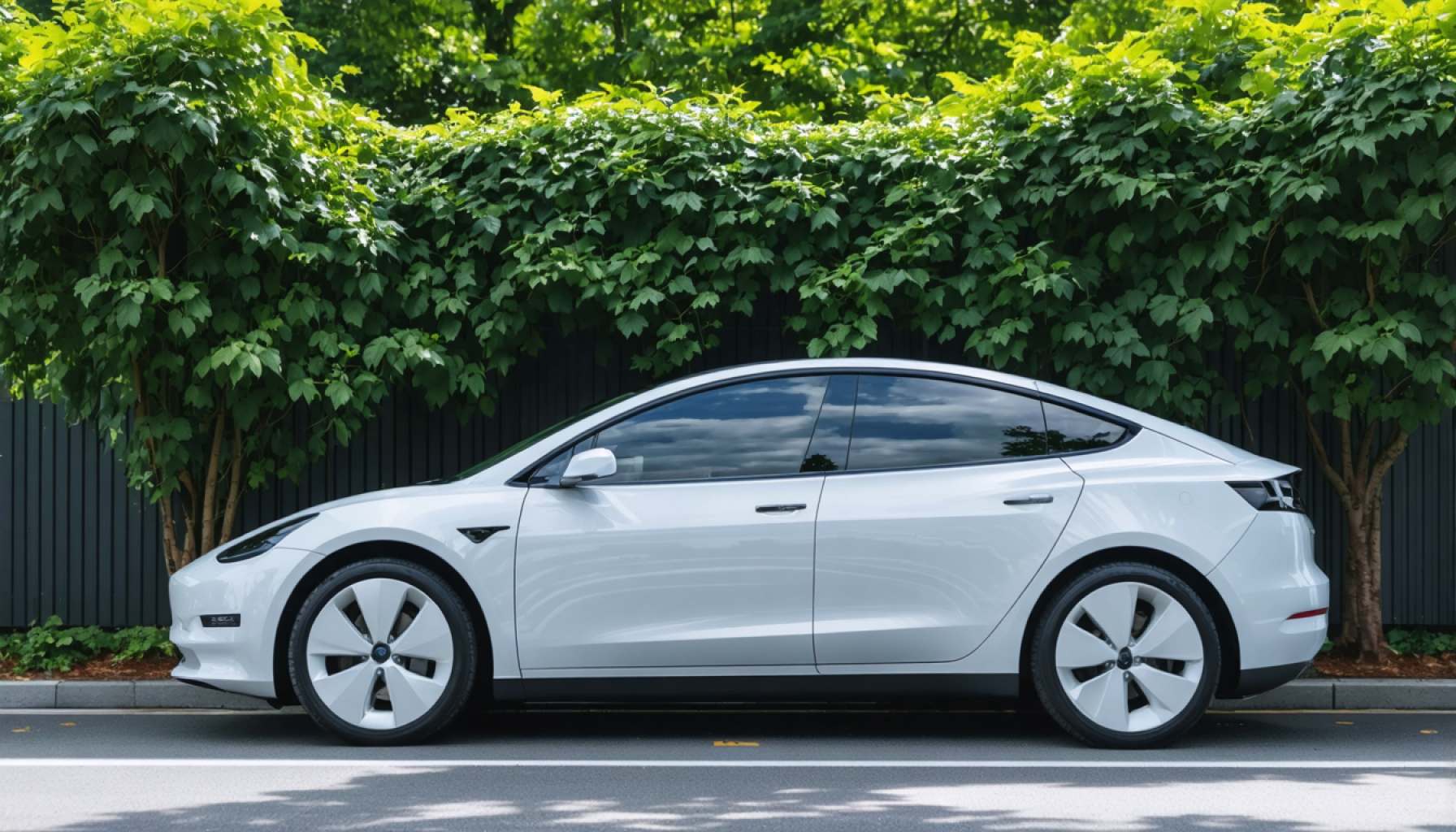
- CATL, a major player in the EV battery market, is spearheading innovations with sodium-ion and fast-charging batteries.
- Sodium-ion batteries offer a cheaper and potentially safer alternative to lithium-ion batteries, targeting mass production by year-end.
- The new battery technologies promise significant improvements: sodium-ion for cold-weather trucking and larger units for cars with a 500-kilometer range.
- CATL’s next-gen Shenxing battery can achieve an 800-km range, with 520 kilometers recoverable in just five minutes, giving Chinese EV companies a competitive edge.
- Strategy includes investing in battery swapping infrastructure to enhance adoption and usability of their products.
- CATL’s commitment to safety is highlighted through a dual battery system aimed at autonomous driving, although mass production details remain pending.
Power surges from Shanghai as China’s battery titan, CATL, unfurls innovations poised to reshape the electric vehicle (EV) landscape. With over a third of the global EV battery market under its belt, the company, known for collaborations with giants like Tesla, Mercedes-Benz, and BMW, has turned the spotlight on a dual-pronged technological leap that promises to electrify the future of transportation.
At the heart of this revelation lies the sodium-ion battery—a fresh contender that challenges its lithium-ion counterpart. While lithium-ion batteries have long dominated, their infamous fire risks and reliance on expensive metals have opened the door to alternatives. Enter sodium-ion, a cheaper, potentially safer option, ripe for mass production by the end of the year. This transformation begins with small starter units for Naxtra-heavy goods vehicles, promising cold-weather reliability that could redefine trucking. As the year wanes, larger batteries will take center stage, ready to power electric and hybrid cars with an estimated range of 500 kilometers.
CATL’s leap isn’t merely one of affordability and safety; it’s a strategic maneuver to cut dependency on precious metals, thrusting sodium-ion batteries from experimental obscurity to industrial reality. With CEO Robin Zeng at the helm, these batteries could soon eclipse half of the existing lithium, iron, and phosphate market. The technology, once overshadowed, now relishes a renaissance, stepping confidently into the commercial limelight.
But this is just the beginning. CATL unveiled another marvel: the second generation of its Shenxing fast-charging battery. This powerhouse promises a staggering 800-kilometer drive on a full charge, with a substantial 520 kilometers recoverable in a mere five minutes—a direct leapfrog over local rivals. This capability ensures that Chinese brands Zeekr, Nio, and Avatr will have cars equipped with an unmatched combination of speed and stamina.
Coupled with these strides is a strategic embrace of battery swapping infrastructure—a development CATL views as crucial for the widespread adoption of its cutting-edge products. While America’s trade policies, spearheaded by tariffs imposed under former President Trump, may inflate prices for parts and vehicles, discussions around geopolitics remain in the shadows, unaddressed by the company’s executives.
Beyond the bounds of conventional power options, CATL’s introduction of a dual battery system underscores an unwavering commitment to safety, especially in the realm of autonomous driving. Designed to mitigate failure risks, this system stands ready, albeit with undetermined mass production timelines. Yet, whispers in the automotive corridors suggest at least one autonomous car already whispers of its integration.
The takeaway is clear—CATL is not just advancing battery technologies; it is sculpting the trajectory of transportation with bold strokes. As the dust settles from their announcements, the message echoes: in this electrified world, holding the reins of innovation could spell the difference between leading on the open road or merely following in its wake.
Power Surge: The New Epoch of Electric Vehicle Batteries
Introduction
As China’s battery giant, CATL, steers toward revolutionary advancements, the global electric vehicle (EV) landscape braces for a seismic shift. Armed with breakthroughs like sodium-ion and second-generation fast-charging batteries, CATL is poised to not only shake the foundations of battery technology but also redefine transportation strategies worldwide.
Sodium-Ion vs. Lithium-Ion: A Comparative Overview
Advantages of Sodium-Ion Batteries:
1. Cost-Effectiveness: Sodium is more abundant and cheaper than lithium, reducing dependency on expensive and scarce metals.
2. Safety: These batteries promise enhanced safety with a lower risk of overheating and catching fire.
3. Cold Weather Performance: Ideal for heavy goods vehicles, sodium-ion batteries outperform lithium-ion counterparts in extreme weather conditions.
4. Environmental Impact: Reduced mining for lithium and cobalt leads to a smaller environmental footprint.
Limitations:
1. Energy Density: Slightly lower energy density compared to lithium-ion, though advances are rapidly closing this gap.
2. Scale of Production: While promising, overcoming mass production challenges remains a crucial hurdle.
Shenxing Fast-Charging Battery: A Game Changer
The second generation of CATL’s Shenxing fast-charging battery is a remarkable innovation set to redefine EV charging:
1. Range: Offers up to 800 kilometers on a single charge.
2. Efficiency: Delivers 520 kilometers in just five minutes of charging.
3. Market Impact: Elevates brands like Zeekr, Nio, and Avatr by integrating speed with endurance.
Strategic Battery Swapping Infrastructure
Battery swapping isn’t just a supplementary feature; it’s a cornerstone of CATL’s strategy for widespread EV adoption:
1. Ease of Use: Reduces downtime significantly, enhancing the consumer experience.
2. Scalability: Provides a viable option to support high-demand urban centers and commercial fleets.
Industry Trends and Predictions
1. Market Dominance: Sodium-ion batteries could soon capture up to half of the existing lithium, iron, and phosphate battery market, reinforcing CATL’s leadership.
2. Geopolitical Challenges: Trade policies and tariffs present hurdles, necessitating strategic adaptations to maintain competitive pricing.
3. Autonomous Driving Integration: A dual-battery system seeks to ensure safety, vital for the burgeoning autonomous vehicle sector.
Frequently Asked Questions
1. How soon can we expect sodium-ion batteries in consumer vehicles?
– Full deployment might commence at the end of the year, focusing initially on industrial applications before expanding to consumer vehicles.
2. What are the cost implications for consumers?
– While initial costs may remain high, scalability and innovation like sodium-ion can potentially drive prices down in the long run.
3. Are sodium-ion batteries environmentally sustainable?
– Yes, they offer a more sustainable solution by avoiding the exhaustive mining of lithium and cobalt.
Actionable Recommendations
1. Invest in EV-ready infrastructure: Embrace both home and public charging options to seamlessly transition as sodium-ion technology rolls out.
2. Stay Informed: Keep abreast of battery technology advancements to make informed purchasing decisions.
3. Evaluate Long-Term Benefits: Consider the environmental and financial savings of upgrading to next-gen battery technologies early.
Conclusion
CATL’s groundbreaking innovations are not merely enhancing battery technologies; they are redrawing the energy and transportation map. As sodium-ion and fast-charging batteries transition from promise to reality, the power dynamics of the EV industry are set for a transformative journey. The future of EVs is here, and CATL is leading the charge.
For further information, explore the latest trends and insights at CATL.



